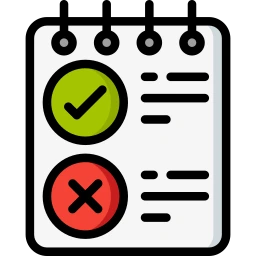Assertions in Java
Java Assertions
The entire topic of assertions in Java is covered on this page. In Java, an assertion is a statement. It can be used to test your program-related presumptions.
We are all familiar with if statements. It might be challenging to construct if statements when we are creating complex apps since they take up a lot of room and clutter the code. As a result, it is always recommended to utilise assertions, which provide the same job as if statements while taking up much less space.

Assertions in Java
Java assertions allow us to test code that we take as true in order to find flaws. The keyword used to make an assertion is – assert.
The syntax is:
assert condition
- In Java, an assertion is a declaration that guarantees the accuracy of any presumptions made by the programme.
- An assertion is presumed to be true when it is executed.
- The JVM will throw an Assertion error if the assertion is false. Its main areas of application are testing objectives.
- Boolean expressions are used in conjunction with assertion statements.
- The assert keyword is used to create assertions in Java.
- There are two distinct ways to write the assert statement, which is used with a Boolean expression.
The First Way is :
assert expression;
and the Second Way is:-
assert expression1 : expression2
Enabling Assertions
Before the addition of assertions, ‘assert‘ was a completely acceptable prefix for variable and method names. However, many of these programes ceased to function after the assert keyword was added since they were using reserved keywords as variable names.
We use the given expression to make claims possible.
java –ea: claim
or
java -enableassertions claim
Here, Claim is the file name.
Disabling Assertions
Additionally, you can specifically deactivate assertions by:
java –da: claim
or
java -disableassertions claim
Here, Claim is the file name.
As an illustration, the following is how we can enable assertions for a certain class:
java –ea: PrepInstaPrime
or
java -enableassertions PrepInstaPrime
Here, PrepInstaPrime is the class that the assertion should be enabled for.
For Example:
import java.util.*;
public class Main{
public static void main(String[] args){
Scanner scn = new Scanner(System.in);
int marks = scn.nextInt();
assert marks >= 60 : "Pass";
System.out.print("Student's Marks is " + marks);
}
}
Output: Student's Marks is 80
Prime Course Trailer
Related Banners
Why use Assertions?
Anywhere a programmer wishes to check whether his or her presumptions are correct.
- to confirm that a code that appears to be inaccessible actually is.
- to confirm the accuracy of any assertions made in comments.
- in order to prevent reaching the default switch situation.
- to examine the object’s condition.
- At the start of the procedure
- after calling a function.
Where to use Assertions?
Only the developer’s code can supply private arguments, thus the developer might wish to double-check those beliefs. Arguments to private methods.
- Cases with conditions.
- Conditions before any method is used.
Where not to use Assertions?
- It is not recommended to utilise assertions in place of error messages.
- Since they could have been supplied by the user, assertions shouldn’t be used to validate parameters in public functions.
- To handle errors supplied by users, error handling should be used.
- Command line arguments shouldn’t be used with assertions.
Get over 200+ course One Subscription
Courses like AI/ML, Cloud Computing, Ethical Hacking, C, C++, Java, Python, DSA (All Languages), Competitive Coding (All Languages), TCS, Infosys, Wipro, Amazon, DBMS, SQL and others





Login/Signup to comment